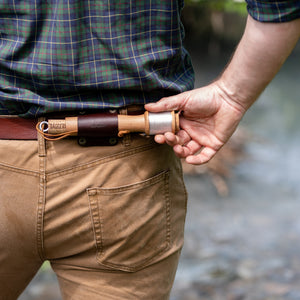How to Choose What to Take in a Backpack
Hiking and backpacking are popular outdoor activities, and because these activities are versatile, they’re applicable for people with a wide range of activity levels.
For people who are relatively new to hiking, it can be challenging to prepare for a trip. Choosing your gear and backpack for the event is a key part of the preparation and with the variety of outdoorsy products on the market today, the number of options can be overwhelming.
Let’s cover the basics of what to pack, and by extension, what sort of backpack you might want to use.
Which supplies are necessary?
The supplies you need to carry with you have a lot to do with the trip you have planned. If you’re planning to hike for a few hours in a relatively safe area, you may only need a few supplies. Ideally, you’ll want to carry:
- A waterproof jacket
- A rain poncho
- Navigation tools (map and/or compass)
- Multi-tool
- First-aid kit
- Food
- Water
- Matches/lighter
- Flashlight + batteries
- Sun protection
However, if you plan to spend more than a day camping and hiking, you’ll need to expand your supply list to include at the very least:
- A tent
- Sleeping bag
- Cooking supplies
- Hygiene items
- Emergency repair tools
Most of the time, unless you plan to hike and camp with a group, you’re going to need a larger, higher-capacity backpack to carry enough supplies for extended stays in the great outdoors.
Including others in your adventure is not only a smart way to lighten everyone’s load, but there is also safety and security in numbers.
How big should your backpack be?
Choosing the correct backpack size requires advanced planning. Decide exactly where you’re going, what you’re planning to do while you’re in the area, and how long you plan to be gone.
Even if you don’t plan to stay out for more than a night, carefully select the supplies you’ll absolutely need and determine how much weight you’ll be carrying before you choose a backpack size.
In many situations, lightweight backpacking gear is a good choice for hikers who prefer carrying a light load. There are space-smart, lightweight options for fishing, wilderness exploration, foraging, and more. If at all possible, take advantage of lightweight gear if you want to carry a smaller backpack.
What’s the difference between a daypack and an overnight backpack?
A standard daypack differs from an overnight backpack in a couple of ways. For one, they’re sized differently, as a lightweight hiking backpack is not designed to carry heavy loads. They’re most useful in hikes that take less than a day because they’re smaller and lighter than an overnight backpack.
Because a daypack is intended for light hiking, they are also not built with back support in mind. Overnight backpacks tend to have padded straps and an internal frame so that hikers can manage more weight without putting strain on their bones and joints.
Should you use an ultralight backpack or one with a hip-belt?
Deciding between an ultra lightweight backpack and one with a hip-belt depends on a few factors.
- Length of planned hike
- Pack weight
- Back condition
For starters, ultralight backpacks are a great option if you plan on carrying supplies weighing 20 lbs or less. They’re ideal for hikers who have planned for a short trip and do not have a plethora of gear to carry with them. For hikers who can easily carry 20 lbs on their backs for an extended length of time, ultralight backpacks are a great option.
For individuals who regularly experience back pain, hip belts can distribute most of a pack’s weight to the hips, which relieves pressure on the shoulders and spine. These belts are ideal for hikers with uninjured hips who either cannot carry weight on their shoulders, or struggle to maintain balance in their upper bodies.
Additionally, some ultra lightweight backpacks come with hip-belts, so hikers can make use of two beneficial features at a time. They can manage a light load when carrying hiking supplies or lightweight fishing kits, and keep their backs pain-free at the same time.
If you’re relatively new to hiking and backpacking, it’s a good idea to start with a lightweight backpack, lightweight gear, and semi-short trips. Lightweight backpacking products can make the process of getting into a new hobby a little easier, and the ease of carrying supplies ensures that hikers have everything they need for a safe trip without bogging themselves down with packs that are too heavy.



















